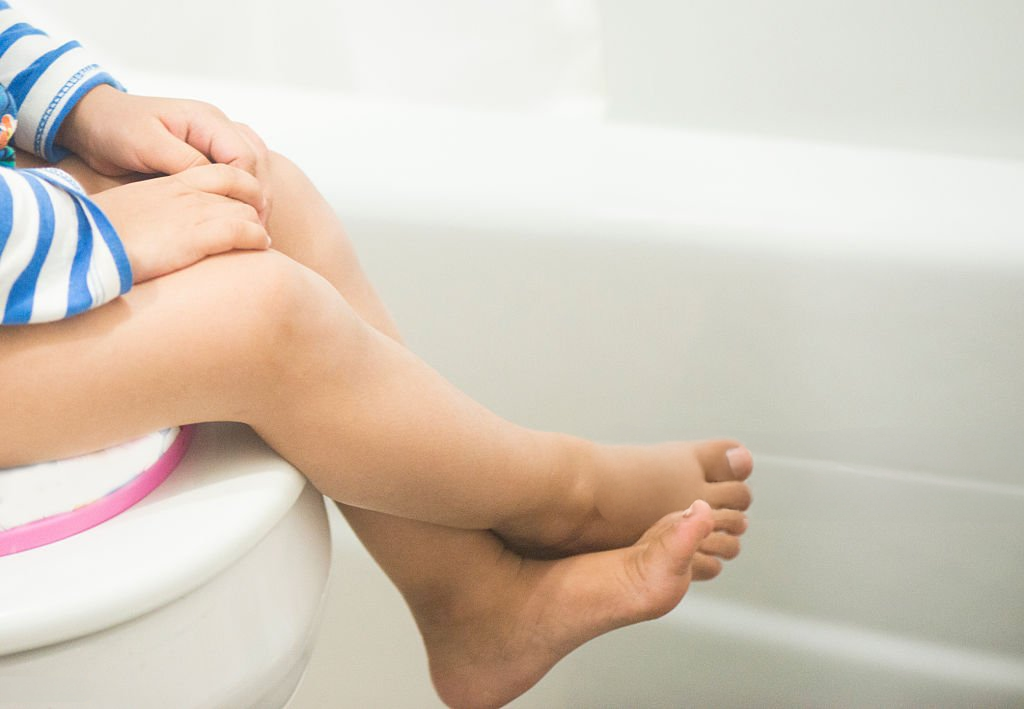Toilet Learning is a significant milestone in your toddler’s journey toward independence. In our Montessori toddler program, we approach toilet learning with deep respect for your child’s natural development, emotional well-being, and need for autonomy. Our methods are thoughtfully designed to support children in a positive, pressure-free environment, allowing them to build confidence and self-awareness at their own pace.
Throughout this article, we use the term ‘toilet learning’ instead of ‘toilet training’ to emphasise that the journey to toileting independence is a child-led, natural process that responds to your child’s own developmental needs and body signals as opposed to an adult-directed, rigid, control-oriented approach.
When should I start supporting my child’s toilet learning process actively?
In the Indian culture, our elders used to start toilet learning for infants as young as six to seven months by attuning to and observing children’s digestion and excretion processes and their body cues. They take the infant to the toilet and make a long and steady ‘ussssss’ sound along with the sound of running water. This triggers the infant’s body to empty a full bladder and bowel. This may be due to various physiological reasons, like a relaxed parasympathetic nervous system, which controls the sphincter muscles of the bladder and the anus and psychological reasons, like a conditioned response to the particular stimuli. At a later stage, this can be transitioned into a more autonomous process. Whatever the case may be, it is possible to support the child’s developmental need to stay in a state of dryness from a very early age.
Some believe that toilet learning can be started only after the child starts showing signs of physical, cognitive and behavioural readiness. This can happen anywhere between the ages of 1.5 to 3 years, varying for each child.
As a parent, however you choose to help your child get ready for toileting independence, it is important to approach it with utmost respect for and sensitivity towards your child’s natural development, emotional well-being, and need for autonomy.
How do we handle the toileting process at TTC?
Diapers are not allowed inside the environment
When a child urinates or defacates, they must be able to feel the resulting bodily sensations of wetness and that their natural state of dryness has been disrupted. Absorbent diapers are an amazing invention that completely absorb all moisture from the child’s body. Imagine how strange it must be for your child to feel the urge to urinate, feel it leave their body and suddenly it’s gone. It disrupts the child’s awareness of their bodily functions. So, if the child has been using absorbent diapers, the first step is to stop that and allow the child to reconnect with the natural awareness of their bodily processes without disruption.
Trusting the Child’s Readiness
We deeply trust in the child’s ability to recognize and respond to their own body signals. Unlike most places where they take children to the toilet based on a strict schedule, we observe each child’s natural toileting cycle and encourage them to initiate when they feel the need. This respects the child’s autonomy and fosters a deeper connection with their own bodily awareness.
We recognize several signs that indicate a child’s readiness for toilet learning, including:
- Physical control (staying dry for at least two hours or after naps)
- Motor skills (ability to walk to the toilet, pull down pants)
- Cognitive understanding (following simple instructions, communicating needs)
- Emotional interest (showing curiosity about toileting)
- Behavioral readiness (willingness to sit on the toilet, following routines)
Recognizing and responding to these signs helps ensure that the toileting process supports the child’s natural growth and confidence.
Toileting is not just about peeing or pooping
Toileting, in the Montessori method, extends beyond the simple act of expulsion. Much like any other Montessori activity, the toileting process is composed of a series of logical steps — from noticing the bodily signals, the expulsion, washing the body, washing hands, wearing clothes, and returning to their work. This sequence allows them to develop a sense of control, responsibility, and order in a fundamental aspect of their daily lives.
Our guides support the child by providing the right balance of assistance and independence, according to the scenario. Whether it’s noticing cues for when the child needs to use the toilet or helping with soiled clothes, the goal is always to guide them toward autonomy.
Designated place for the toileting process
In some homes, parents place a training potty outside the bathroom — in the living room, playroom, or even the kitchen — thinking it makes the process more convenient. However, this practice can actually be detrimental to the child’s toilet learning journey in several important ways:
- Place Association Consistency in location helps a child associate the act of elimination with a specific place — the bathroom. By consistently taking the child into the bathroom for expulsion, we support the natural connection between the bodily function and its appropriate setting. This also allows the child to observe adults using the toilet when needed, reinforcing the behavior through natural modeling. When the toilet is always used in the same place, learning happens more seamlessly and respectfully.
- Minimizing Distractions Bathrooms are typically low-stimulation environments, which helps the child stay connected to their bodily sensations before, during, and after elimination. If the potty is placed in a busy area of the house, the child is much more likely to become distracted, which can interrupt the process of awareness and control that is central to successful toilet learning. In Montessori, the goal is always to help the child develop deeper body-mind awareness — and the environment plays a critical role.
- Respecting Privacy Toilet learning involves sensitive bodily functions and private body parts. By keeping the potty inside the bathroom, we respect the child’s need for privacy and help them begin to develop a healthy sense of personal boundaries and autonomy over their own body. When toileting is treated as a natural, respectful, and private activity, children internalize a sense of dignity about their bodily needs.
The Toddler environment is designed to encourage independence, autonomy and privacy. Children have independently-accessible potty seats, easy-to-reach handwashing stations, accessible clothing that the child can manage on their own and a private changing space outside the bathroom where children can change their clothes in privacy. Everything is thoughtfully arranged so that the child can take charge of their own toileting needs without unnecessary adult intervention.
Role Modeling in Toilet Learning
One of the easiest — and most powerful — ways to support your child’s toilet learning is simply by modeling it yourself. Children are incredible at picking up new skills just by watching the people they trust most.
At Home
At home, the best thing you can do is let your child witness you use the restroom. Many parents are surprised how quickly children learn when they naturally witness this part of daily life. In fact, we’ve seen in several families that when circumstances didn’t allow the mother to leave the child outside the bathroom, and the child went in with her, the child often learned to use the toilet much faster.
If having your child with you doesn’t feel right, that’s absolutely fine too. You can still support their learning just by letting them know — for example, saying, “I’m going to the bathroom to use the toilet now.” That simple announcement plants the seed and gives them a clear example to follow.
At School
In the classroom, the guide models the same behavior in a respectful way. When the guide needs to use the restroom, they let the children know by saying it aloud. Over time, children naturally pick up on this and start to communicate their own need to use the toilet in a similar way.
No Rewards, Incentives, or Retribution
The goal of toilet learning is to support the child’s growing awareness of their own body signals and needs — not to control or manipulate their behavior. Sometimes a child may sit on the potty and expel immediately. Other times, they might sit for a while and not expel at all. Both experiences are completely normal and part of the learning process.
Using rewards or praises when they are “successful,” or showing disappointment or criticism when they are not, disrupts the child’s intrinsic motivation. It shifts their focus away from listening to their body and turns it toward seeking external approval. This is not only disrespectful to the child’s natural process but can also cause unnecessary anxiety or shame around toileting.
In Montessori, we trust the child’s timeline. We protect their dignity and support their connection to their body — free from pressure, praise, or punishment.
Respect and Sensitivity
We are extremely sensitive to the toileting process because we understand how even the smallest negative gesture or remark can have a significant impact on a child’s emotional well-being. Toileting is like any other bodily function and needs to be treated as such. Soiling or wetting their pants is a natural stage in the toilet learning process. Any feelings of disgust or revulsion from the adults will manifest on their faces, and children will easily sense and mirror them. This will negatively impact the toileting process. Therefore, we ensure a positive, accepting, and respectful environment at all times.
Trained Guides Only
Unlike some other places, we do not allow helpers, “aayaas” or untrained individuals to handle the toileting process. Only the trained guides and assistants who fully understand the importance of this stage are involved. This ensures that every interaction around toileting is supportive, respectful, and aligned with the child’s emotional needs.
How does a negative toilet learning experience impact your child psychologically?
The toddler and early preschool years are a sensitive period for bodily autonomy. During toilet learning, children are learning not only to recognize bodily sensations and take action, but also to feel in control of their body and its functions — including the opening and closing of body sphincters.
When this process is approached with respect, patience, and support, the child develops a healthy sense of autonomy, pride, and competence. They learn: “I am in charge of my body. I can trust myself.”
However, if toilet learning is rushed, pressured, filled with rewards, punishments, shame, or excessive adult control, the child can internalize a different message: “My body is not mine. Others control when and how I release.”
This undermines their sense of autonomy at a very deep and unconscious level. Constipation is one common and immediate physical manifestation of this power struggle. A child who feels pressured may choose to “hold” their bowel movements as a way of asserting control over their body. Chronic withholding can lead to painful constipation, further complicating the toilet learning process and potentially creating long-term emotional and physiological challenges.
Psychoanalytic theory (especially Freud’s stages of psychosexual development) suggests that disruptions in the toilet learning process can contribute to “anal-retentive” personality traits later in life. This can manifest as:
- Excessive need for control
- Perfectionism
- Fear of making mistakes
- Holding back emotions or bodily needs
- Compulsive overemphasis on order, neatness, and rigid routines
One key psychological reason for this is that the child’s bodily autonomy — particularly their ability to control body openings — was not fully respected during a crucial developmental phase. When bodily functions are overly controlled by external forces, the child may develop internal anxiety around letting go, both literally and emotionally.
Conclusion
By trusting the child’s natural rhythm, creating a thoughtfully prepared environment, and approaching toileting with sensitivity and respect, we lay the foundation for a positive and empowering experience. Toilet learning, when handled with care and understanding, becomes not just about physical independence, but also about nurturing a child’s sense of self-worth, confidence, and trust in their own body.
We are honored to support each child through this important stage of growth with the patience, dignity, and respect they deserve.


